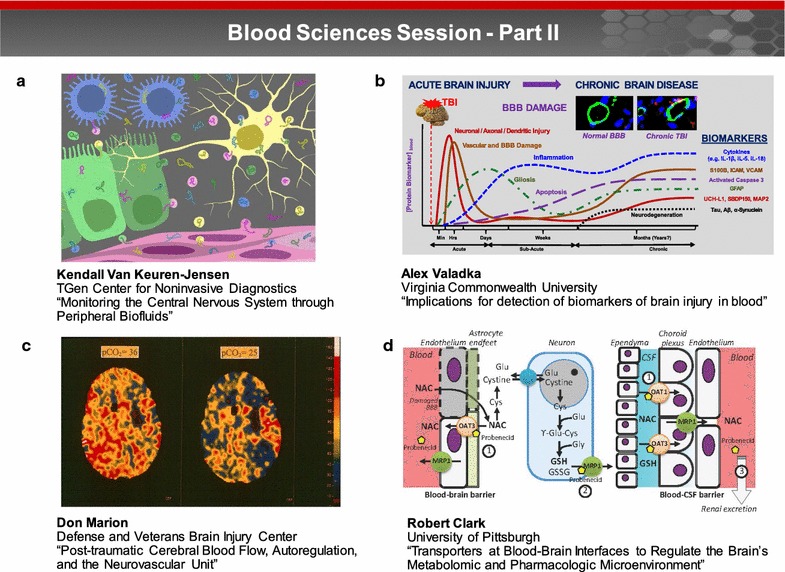Fig. 2.

Blood sciences session—Part II. Tools and technologies are currently being developed to improve capabilities for assessment and monitoring of CNS trauma to: (1) explore the relationship among the post-traumatic cerebral blood, autoregulation and the neurovascular unit; and (2) leverage different transporters at the BBIs to regulate the brain metabolomics and pharmacologic microenvironment. a Dr. Kendall Van Keuren-Jensen discussed the need for accessible biomarkers to allow more frequent monitoring of the CNS and the potential to improve patient care. The presence of RNA in body fluids and its relative stability when transported via EVs or carrier proteins has captured significant attention as a source for biomarker discovery. Image courtesy of the NIH exRNA Communication Program. b Dr. Alex Valadka noted that differences in markers released by neuronal and glial cells may make possible the diagnosis of specific subtypes of TBI based on distinct patterns and ratios of glial and neuronal markers. Image courtesy of Dr. Valadka. c Brain trauma can result in an immediate decrease in the cerebral blood flow, resulting in loss, or fluctuations in multiple physiological control systems including blood pressure and chemical autoregulation. Image courtesy of Dr. Marion. d Dr. Robert Clark reported on the importance of membrane transporters at the BBI. These membrane transporters are responsible for efflux of exogenous substrates (e.g. drugs) at the BBB and CSF-blood barriers, impacting the brain’s microenvironment. Image courtesy of Dr. Clark
